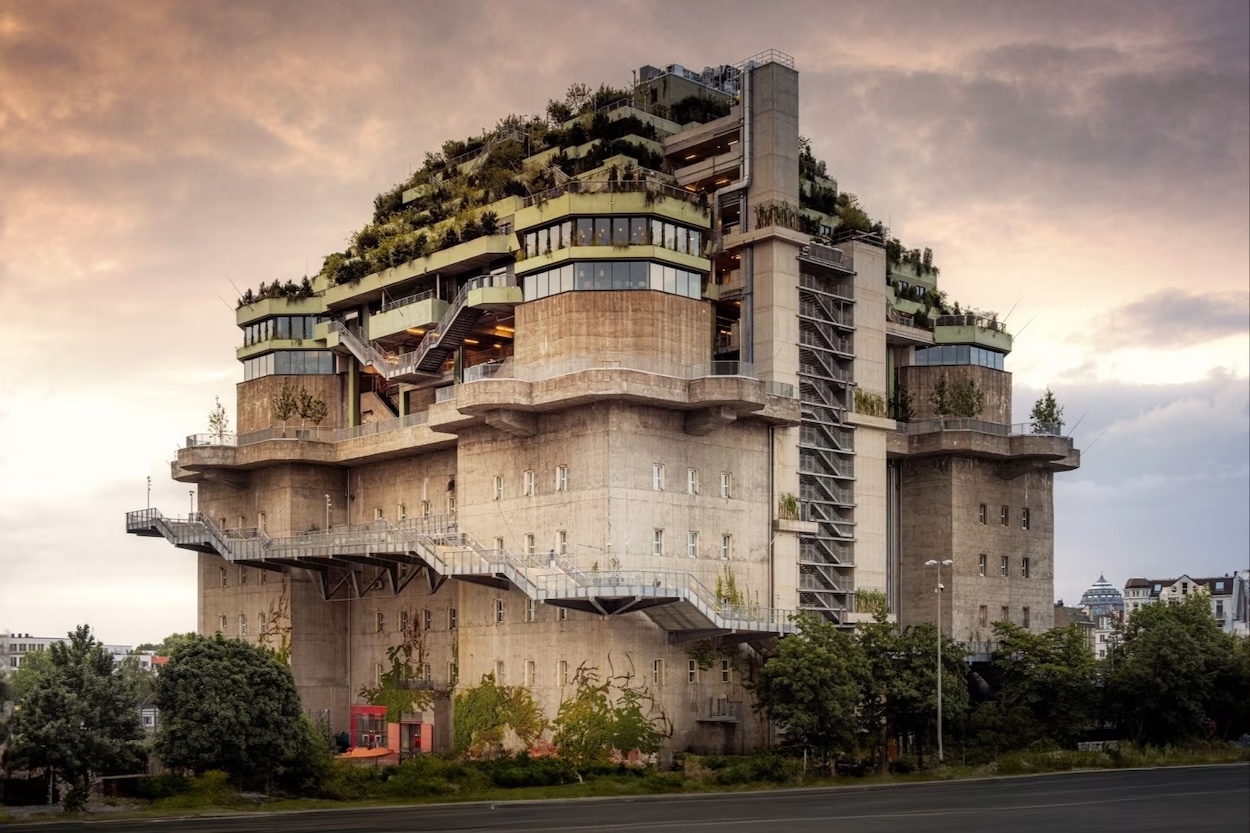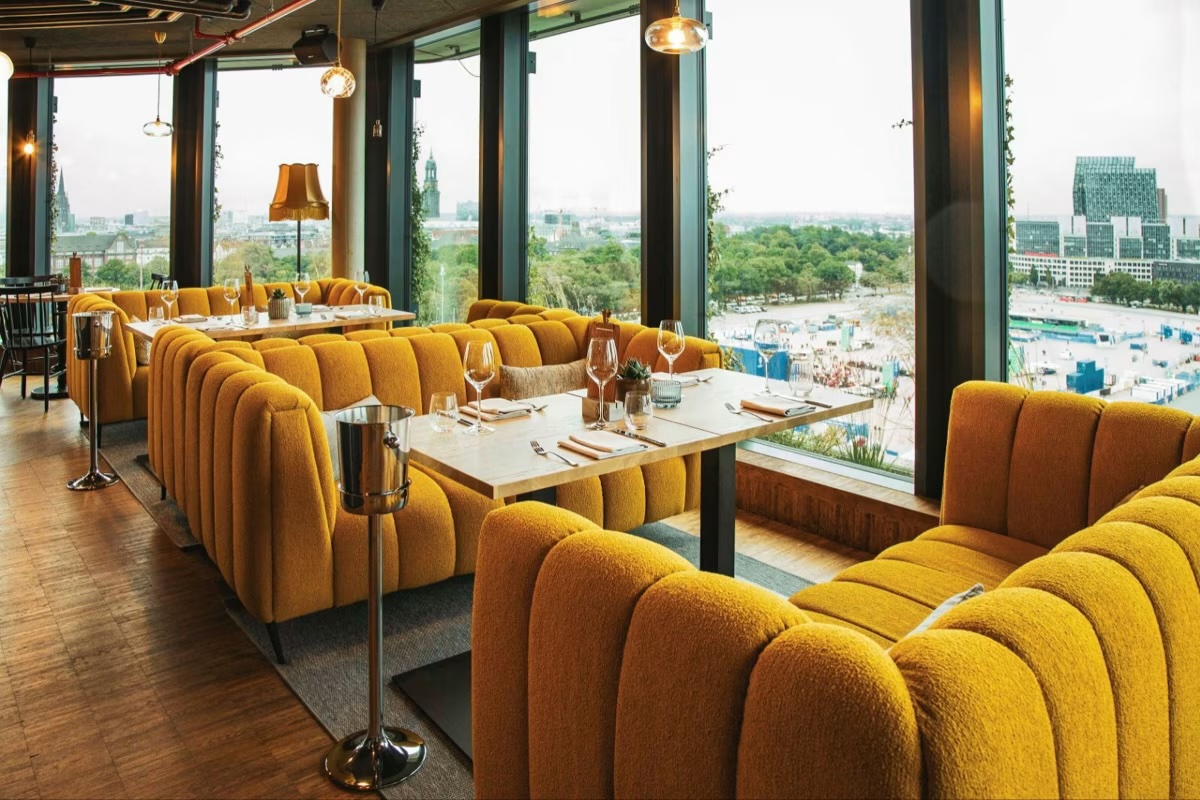When it comes to Brutalist landmarks, few surpass the Hamburg Bunker in sheer brutality. The concrete behemoth has a particularly challenging history: Built at the orders of Adolf Hitler following Berlin’s air raids in the early 1940s, it was once equipped with powerful anti-aircraft cannons, and nearly 25,000 people sought shelter within during a World War II bombing.
In the ensuing decades, parts of the flak tower were converted into shops and artist studios as the nearby St. Pauli neighborhood gentrified into a party palace. And thanks to entrepreneur Thomas Matzen and a $67 million boost from the HafenCity project that helped create the city’s Elbphilharmonie concert hall by Herzog & de Meuron and curvy Marco Polo Tower by Behnisch Architekten, the monstrous structure has been transformed into a full-on “hipster hub.” Its new incarnation features restaurants, sports facilities, a concert hall, nightclub, boxing gym, and a five-story Hard Rock hotel, all tied together with a leafy path snaking the stoic exterior. A minty-hued pyramidal extension with foliage-filled roofs tops the whole thing off.



